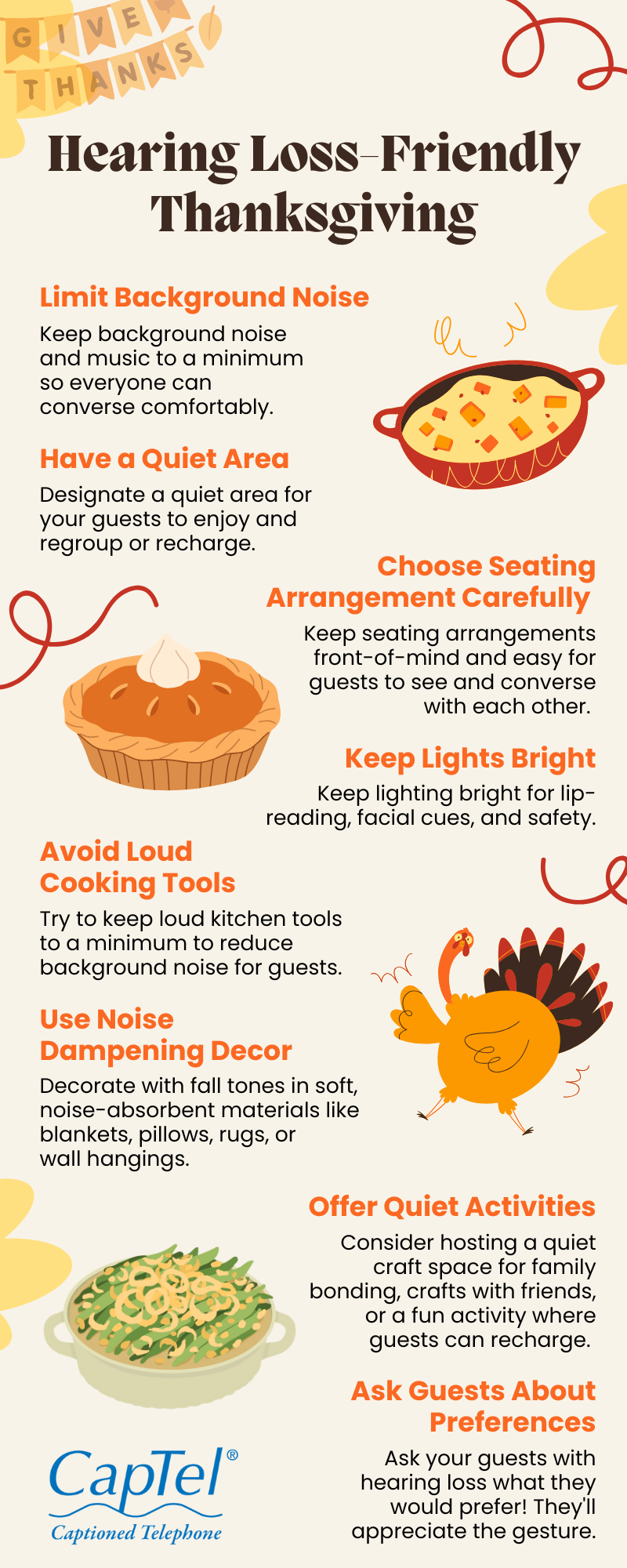Learn more about the different degrees of hearing loss in this helpful graphic.
Hearing loss isn’t the same for everyone, and on a personal level, the experience can evolve over time. Understanding the degrees of hearing loss and terminology can help you better monitor your own hearing health. Hearing healthcare professionals such as audiologists can help you identify your current level of hearing loss and personalize your care accordingly.
Below, find the six degrees of hearing loss explained, including tips for effective communication at each stage. The decibel ranges indicate sound levels that become difficult to hear at each stage:
- Slight (16 to 25dB sounds may become difficult to hear)
- Mild (26 to 40dB sounds may become difficult to hear)
- Moderate (41 to 55dB sounds may become difficult to hear)
- Moderately severe (56 to 70dB sounds may become difficult to hear)
- Severe (71 to 90dB sounds may become difficult to hear)
- Profound (91+dB sounds may become difficult to hear)
Keep reading to learn more about the explanations of these different degrees of hearing loss. You may also be interested in checking out our Safe vs. Dangerous Decibel Levels infographic for examples of sounds at different decibel levels.
Slight (16 to 25dB)
With a slight degree of hearing loss, some people may find it challenging to hear softer sounds, such as a ticking watch or calm breathing. If this experience sounds familiar, visiting an audiologist for an annual hearing test can establish a baseline so that you receive individualized recommendations for protecting your hearing.
Mild (26 to 40dB)
With a mild degree of hearing loss, some people may notice difficulty hearing speech, mainly if it’s whispered or far away. If you think you might be experiencing mild hearing loss, it can be helpful to have one-on-one conversations in a quieter area. A hearing health professional can explain this degree of hearing loss to help you understand it even more.
Moderate (41 to 55dB)
With moderate hearing loss, conversations may be harder to hear. You may also find yourself turning up the TV or radio volume. For some people with a moderate degree of hearing loss, the sounds of speech may sound muffled or unclear. To make it easier to hear others, consider limiting background noise, and ask conversation partners to speak clearly while facing you. You may also be interested in the various types of assistive listening devices, such as FM devices and personal amplification products.
Moderately severe (56 to 70dB)
At the moderately severe degree of hearing loss, sounds like barking dogs, washing machines, and highway noise can be more difficult to hear. For those interested in using assistive listening devices, there are plenty of communication tools for people with loss that can come in handy. Examples include hearing aids, personal sound amplification products (PSAPs), visual signaling devices, and amplified phones.
Severe (71 to 90dB)
Some people with severe hearing loss have difficulty hearing louder noises, such as a lawnmower or siren. However, everyone’s personal experience is different. Your audiologist can explain the various technologies and treatments that can make it easier to hear based on your preferences and specific degree of hearing loss.
Profound (91+dB)
The sixth degree of hearing loss is referred to as profound hearing loss. Without the help of amplification devices, people with profound hearing loss may perceive varying volumes of sounds as vibrations. As always, work closely with your hearing health professional who can help explain the degrees of hearing loss and personalize your care and treatment based on your situation.
No matter the degree of hearing loss, a captioned telephone that displays text versions of everything the person says on the other end can be helpful.
To learn more about how a captioned telephone can help people with hearing loss, browse our selection of CapTel captioned telephones for hearing loss here.



